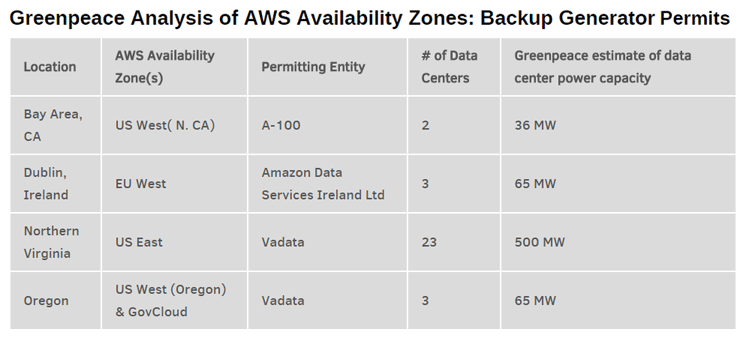Amazon Web Services Infrastructure Inside. Part 2

Amazon, to be more exact, its AWS cloud division has one of the fastest growing, deployed and sophisticated infrastructures. As we already wrote , not so long ago, the company discovered some of its secrets concerning the principles of the organization of this infrastructure. In the second part - information about where the data centers are located, how all this is connected into one system, and how it works.
Amazon Web Services currently has at least 30 data centers, and management plans to build an additional 10 or 15 new ones. Most data centers are located in northern Virginia, about 20 data centers with a total capacity of approximately 500 MW are responsible for AWS operations. But the geography of AWS data center infrastructure is not limited to Virginia alone. Now there are three large campus DCs being built in Ohio, plus cloud data centers are still working in Ireland, Brazil, China, Japan, Australia and Singapore.

')
As for the United States, here the company's data centers are grouped into two groups - one in the West and one on the East Coast. This allows for uniform data transfer across the continent, with minimal delays. Plus, the hubs of US data centers provide customer support in other regions. For example, a hub on the East Coast serves Europe, and on the West Coast it serves Asia. This network configuration also makes it possible to duplicate temporarily idle DCs (for example, due to a disaster) without problems for AWS operation.
Google and Facebook, which have their own server farms in Oregon and North Carolina, use a similar operating principle. For Amazon, the initial core of the entire infrastructure is Northern Virginia.
North virginia
Since the company's network infrastructure is now spreading around the world, there are DC companies in many regions. But the foundation is 23 data centers in Loudoun and Prince William counties. Why are there so many company data centers? The fact is that almost all important networks are connected here, including the Equinix hub.
Nine DC companies are located in Stirling, five - in Osborne, 6 - in Manassas and two - in Chantilly. This arrangement of data centers provides data transmission with very low latency between Availability Zones, customers of the company can use istansy in different regions to ensure continuity of work in case of unforeseen situations (for example, natural disasters).
As a result, the US East Coast has the largest number of Amazon Web Services data centers, and the company continues to expand its infrastructure by adding data centers to the system. Here, the total capacity of DC reaches about 500 MW.

Oregon and California
Since 2009, Amazon has been building its data centers in northern California. True, electricity is quite expensive, so the company focuses more on Oregon, rebuilding its data centers in small towns along the Columbia River.
In Oregon, not only Amazon is built, but many other companies. There are several reasons here:
- Cool climate, which allows the use of outside air to cool its systems;
- Profitable taxation system for business;
- Energy from hydroelectric power stations located on the river.
The last factor gives Amazon another advantage - increasing its ranking in the list of "green" companies. Yes, hydroelectric power plants cause damage to the environment, but not as significant as the same thermal power plants.
Three data centers built in this region are experimental in nature - they combine the features of traditional DCs and modular data centers. This allows you to quickly expand the capabilities of DC, increasing its own presence in Oregon. Now another data center is being built here.
The company has already announced that it hopes to build 15 more data centers in Oregon.
Ohio
The company's leadership announced its intention to invest about $ 1.1 billion in building campus data centers in three locations at once: Dublin, Hilliard and New Albany. Each campus will have up to 5 data centers with 18 standby generators with a capacity of 2.5 MW each.
This information allows you to judge the total capacity of each campus - about 32 MW.
AWS has about 40 edge nodes around the world to operate the CloudFront network.
Source: https://habr.com/ru/post/269025/
All Articles